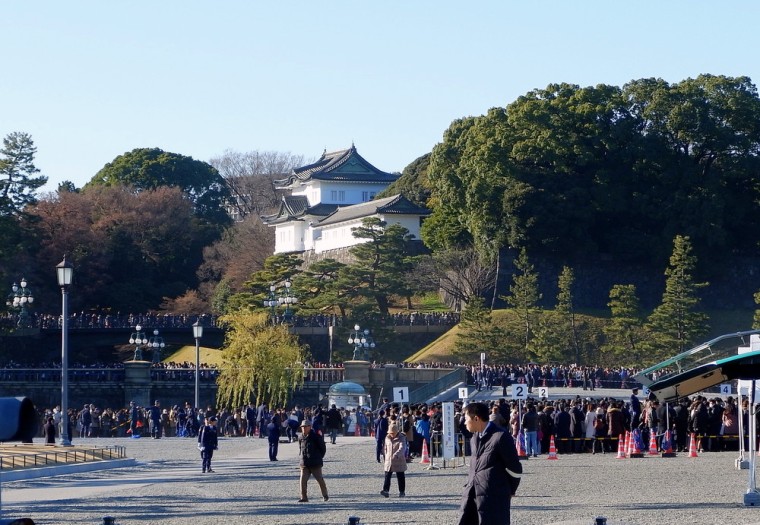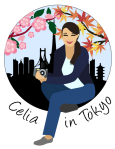Hello, 2018!
This was the first time since I moved to Tokyo that I have stayed in Japan over the winter break. It was so nice to spend time just catching up with friends, relaxing and getting up without an alarm, rather than packing suitcases and catching planes. Another great thing is that I was able to fully experience Oshogatsu, the Japanese New Year period, from beginning to end.
How do you celebrate the new year?
Back in Australia, most people spend Christmas with the family, then go shopping on Boxing Day. After that, it’s like the calm before the storm as we get ready to party on New Year’s Eve. There are fireworks and festivities in every city and town and everyone counts down to the new year together. New Year’s Day is then spent in recovery mode on the couch!
Things are far from party-oriented in Japan. One of the most commonly followed and most important traditions of the year is the New Year period. A local newspaper had an article about Oshogatsu customs last month detailing exactly when to do what, even putting in a timeline of events – this is how you ensure the whole country remains consistent!
Before Oshogatsu even begins, there are a bunch of things the Japanese do to ‘prepare’.
From December 13th, people start doing osoji. This is where they get on their hands and knees and clean their whole house. I asked a Japanese friend what she was going to do over Christmas. Her reply: “Osoji”.
December 22nd to 25th is the recommended time to post your nengajo. This is a New Year greeting postcard you to send to relatives, friends, colleagues, old classmates, old school teachers, etc. Some people send a modest 20 or so cards, while others send over 200! The recipients all receive their card on January 1st. It sounds like a big hassle, and the younger generations agree – many send theirs electronically!
After people finish osoji, you will see almost every house and shop displaying an oshogatsu kazari. There are two main types of decorations: large ones made from bamboo and smaller ones made with straw and pine. There are also other decorations put inside the house. All of these are meant to welcome the Shinto gods.
Finally we come to New Year’s Eve, called Omisoka. People eat toshikoshi-soba, a special soba made with extra long noodles that symbolize long life – and watch a famous TV music show called Kohaku. At shrines, priests ring the bell 108 times at midnight. In Buddhism, there are 108 earthly evils… anger, deception, greed, violence, to name a few. Each ring rids us of one evil and we are left ‘pure’ for the new year.
Akemashite omedetogozaimasu! (Happy New Year).
To start the year off right, there’s only one thing to do: hatsumode! The first shrine visit of the year is a HUGE event in Japan. I’d say about 95% of the population takes part in this ritual. Most people visit a shrine between the 1st and 3rd. The most popular shrines in the country – Meiji Jingu, Fushimi Inari, Atsuta Jingu, etc – see literally millions of people coming to pray! It is extraordinary. This year I went to Takahata-fudoson, a famous yet relatively small temple in western Tokyo. This is what the crowd was like:
When you finally reach the shrine, first you need to wash your hands and mouth. Then, you throw a coin into the money box, bow, clap and pray. If you’ve got any big events coming up during the year, like final school exams, you may want to bow deeper!
Then, you get rid of last year’s New Year luck charms and buy new ones. Some common charms are the red daruma doll where you say your wish and colour in one eye, then when that wish comes true you colour in the other eye; an omikuji paper that has your fortune for the year; and a hamaya arrow.
After the shrine visit, it’s time to start eating… and not stop for at least 3 days! Before digging into the osechi ryori, it’s tradition for the adults – from youngest to oldest – to drink otoso, a special sake served in 3 small dishes. This represents washing away the bad things of the previous year.
Side note: one of the most notorious New Year foods is a soup called ozoni. It’s made with a ball of sticky rice cake just big enough to get stuck in your throat if you’re not careful. Sadly, every New Year, the news reports the number of people who’ve died from choking on it.
While struggling through a food coma, many people go out to shops to buy a fukubukuro. This is a bag full of goods sold at a discounted price. The contents are a mystery, so basically you have to keep your fingers crossed that you like what’s inside, and if it’s clothing, hope it fits!
One New Year event that’s particular to Tokyo is the Emperor’s New Year greeting. Every year, the Imperial Palace opens its gates twice a year – once on the Emperor’s birthday, and once on January 2nd. Next year, the Emperor will abdicate, so this year the palace received over 120,000 visitors (up from the usual 80-90,000). I wanted to go, but alas there were just too many people and I missed the cut off.
Work generally resumes on January 4th or 5th, though January 7th is the day people take down their decorations. And thus ends Oshogatsu!
What are some New Year traditions where you are?






















Great write up on Japanese new year celebrations. It’s an interesting time of year to experience for those of us who are not Japanese.
LikeLike
Thanks, Jennifer! It was interesting seeing the kazari pop up everywhere at the same time. I usually miss seeing it altogether!
LikeLiked by 1 person
Heavens, what a lot of things to observe. I had no idea it could be so complicated, Celia. Thanks for sharing and a happy 2018 to you. :) :)
LikeLike
Happy 2018 to you too, Jo :)
It is a lot, isn’t it!! There’s so many traditions and customs in Japan.
LikeLiked by 1 person
so interesting! thank you for sharing!
LikeLike
You’re very welcome! Thanks for reading!
LikeLiked by 1 person
Hi Celia I was happy to see the picture Takahatafudo being shared on your weblog. It’s a proud landmark of our town. (though I’ve never made my hatsumode visit despite living nearby for the last 2 decades…)
LikeLike
Hi Shinichiro, thanks for your comment!
Wow! How come you’ve never joined hatsumode there?? I have to say it was much more crowded than I was expecting. We had to start lining up from the train station!
LikeLike
My New Year in Japan was one of the best I ever had. I love the ritual and tradition. Joya no kane (ringing the bell) was my favourite thing 😊
Thanks for sharing
LikeLike
Totally agree – New Years is such a great time to be in Japan if you are with Japanese friends or at least join in the traditions. Did you actually participate in ringing the bell? That’s so cool!
LikeLiked by 1 person
Yes. In Kyoto, we were with Japanese friends and we lined up. Each group of three or four people got to ring the bell. It was very cool 😊
LikeLiked by 1 person